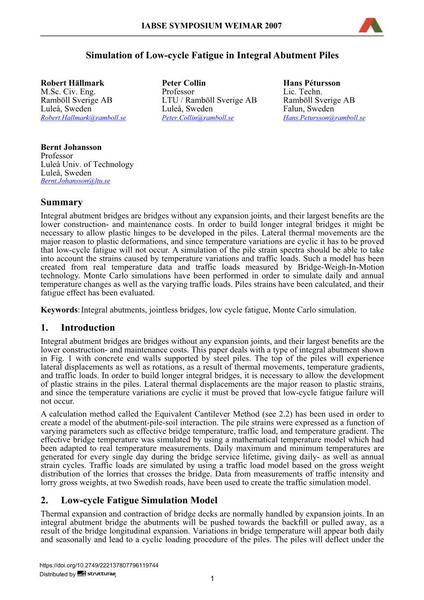Simulation of Low-cycle Fatigue in Integral Abutment Piles

|
|
|||||||||||
Bibliografische Angaben
| Autor(en): |
Robert Hällmark
Peter Collin Hans Pétursson Bernt Johansson |
||||
|---|---|---|---|---|---|
| Medium: | Tagungsbeitrag | ||||
| Sprache(n): | Englisch | ||||
| Tagung: | IABSE Symposium: Improving Infrastructure Worldwide, Weimar, Germany, 19-21 September 2007 | ||||
| Veröffentlicht in: | IABSE Symposium Weimar 2007 | ||||
|
|||||
| Seite(n): | 86-89 | ||||
| Anzahl der Seiten (im PDF): | 8 | ||||
| Jahr: | 2007 | ||||
| DOI: | 10.2749/222137807796119744 | ||||
| Abstrakt: |
Integral abutment bridges are bridges without any expansion joints, and their largest benefits are the lower construction- and maintenance costs. In order to build longer integral bridges it might be necessary to allow plastic hinges to be developed in the piles. Lateral thermal movements are the major reason to plastic deformations, and since temperature variations are cyclic it has to be proved that low-cycle fatigue will not occur. A simulation of the pile strain spectra should be able to take into account the strains caused by temperature variations and traffic loads. Such a model has been created from real temperature data and traffic loads measured by Bridge-Weigh-In-Motion technology. Monte Carlo simulations have been performed in order to simulate daily and annual temperature changes as well as the varying traffic loads. Piles strains have been calculated, and their fatigue effect has been evaluated. |
||||
| Stichwörter: |
LCF Monte Carlo-Simulation
|
||||
